A Beginner's Guide To Wine from Austria
- Ara Esparza

- Jul 14, 2023
- 14 min read
Updated: Aug 25, 2023
It seems like Austrian wine is having a moment, and chances are that you have seen a wine from Austria on a menu recently.
Austria has a long tradition of winemaking that dates from the roman empire. There are even records of the presence of the monks of Citeaux (in Burgundy) in the Danube area.
History, tradition and a bit of drama *we all love a bit of drama*, the Austrian wine history has it all.
If you want to venture into wine from Austria, or if you are already there but you want to know more about it, this guide is perfect for you. This beginner’s guide will focus on still, dry wines and as a bonus, it includes information on 14 note-worthy Austrian wines along with tips on where to get them (or drink them) right now. Enjoy!
Interesting Facts
In Austria, there is a strong culture of drinking wine while eating food so most of their wines are designed to be a great pairing for food
Do you enjoy wines made with hand-harvested grapes? You are in luck because, in Austria, it is mandatory to harvest the grapes by hand
The Austrian appellation system went from being based on village names (up to 1960) to being based on the grape variety (1970s)
The classification allows for cru vineyards (Grand and Premier). Grosse Lage means Grand Cru and Erste Lage means Premier Cru
There is a single-vineyard summit held in Grafenegg (a picturesque town in Austria also known for its strong musical tradition) where wine professionals gather for a silent tasting. This event was one of Austria’s best-kept secrets and it gathers the best wines of Austria.
Austria is known for its white wines but they also produce fine examples of red wine
Regions, Styles & Grapes
For this beginner's guide to wine from Austria, we are focusing on white and red still wines (still refers to those wines that are not sparkling) and that also are dry (not sweet).
This is a summary of the geographical region (in bold) plus the distinctive style of wine and grape variety.
📍 Austria South: Steiermark
Typical style & grape variety: white wines made from Chardonnay and Sauvignon Blanc.
📍 South of the Danube: Burgenland, Thermenregionl, Carnuntum.
Typical style & grape variety: red wines made from Zweigelt, Blaufränkisch & the Pinot family.
📍 North of the Danube: Niederösterreich, Vienna
Typical style & grape variety: white wines made from Grüner Veltliner & Riesling.
If you are more of a visual person, check out this gorgeous map from Amble Wine. They sell fantastic books about wine. (If you want a discount, use the code THEWINESNUG at checkout).

These are the most important white wine appellations in Austria:
🇦🇹 Kamptal DAC
🇦🇹 Kremstal DAC
🇦🇹 Traisental DAC
🇦🇹 Wagram DAC
🇦🇹 Wachau DAC
🇦🇹 Wiener Gemischter Satz DAC
🇦🇹 Weinviertel DAC
🇦🇹 Südsteiermark DAC
The most important red wine appellations in Austria are:
🇦🇹 Thermenregion DAC
🇦🇹 Carnuntum DAC
🇦🇹 Leithaberg DAC
🇦🇹 Eisenberg DAC
1985 - A Black Year
Yes, 1985 was a devastating year for the Austrian wine industry. It is essential to know this context to understand why the regulations in the country are amongst the most strict in the world, and probably the most stringent in Europe.
Back in 1985, it emerged that some Austrian wineries added a chemical compound, called diethylene glycol, to their wines in order to make them appear more full-body and sweet. This chemical is a component in some antifreeze brands and of course, it is not considered fit for human consumption so it is illegal to add it to the wine. Imagine the conundrum! Austrian wine bottles were removed from several markets and destroyed. If you want to know more about this, read this article.
It took more than a decade for the Austrian wine industry to recover. A positive consequence was the creation of strict regulations for winemaking which has promoted the creation of higher-quality wines and full oversight of the process.
Airtight Regulations
From those dark times, the Austrians went all hands-on to tackle the problem and created rigid laws for the wine industry. In 2002 they created their DAC system (Districtus Austriae Controllatus) with the objective of promoting the typicity of each region. This system is similar to the AOC of the French (Appellation d'Origine Contrôlée).

This means that wines under the classification have regulations about the grape varieties allowed, yields, winemaking, etc. In general, you can expect higher quality from a DAC region than from one without. *This is not an absolute, nothing in wine is, hence the generalisation*
These regulations have been signed into law (2023) and Austria has the first legal classification in Europe outside of France.
Navigating the Appellation System
There is another key player that will help you understand this system: The Österreichische Traditionsweingüter (ÖTW), which roughly translates to Austrian traditional wineries.
The ÖTW is a winegrowers’ association founded in 1992. Its primary objective is to create a classification of Austria’s vineyards (Ried) that helps consumers get some guidance to navigate Austria’s appellation system.
Why, you may ask? Well, because the wine regions in Austria are very diverse. So much so that neighbouring vineyards can have different types of soil or micro-climates. They claim that this could even happen within a couple of rows difference in the vineyard. And of course, these differences have a direct impact on the wine.
The estates that decided on being part of this association will bear the ÖTW seal on the capsule or on the label.
Again, in general, if you have a bottle of Austrian wine with the ÖTW seal, you can expect a wine with stricter rules and higher quality.

Understanding the Hierarchy
Similar to other wine regions, the Austrians have developed an appellation system to help us navigate and understand the quality of the wine we are drinking. This is a very easy-to-digest view of the system, let me know in the comments if you want a deeper level of explanation.
DAC (Districtus Austriae Controllatus) is the abbreviation given to an Austrian Qualitätswein (quality wine) that is typical of a specific region. That region will be named on the label and include the initials DAC. For example, if you read on a label Kamptal DAC, this means that the wine has inherent characteristics of the Kamptal area and reflects its unique conditions, its typicity.
To distil even more the levels of quality, there are 3 different tiers of quality within each DAC region. Think about it as a pyramid (useful diagram below, feel free to download it!).
The base of the pyramid is the largest tier which is the regional category (or Gebietswein). Then you have the village category (Ortswein) and at the very top, you have the smallest category that is formed by single vineyards (Riedenwein).
The single-vineyards tier is further subdivided into 3 quality categories:
Ried/Lage - Single vineyard
Erste Lage (ÖTW) - Premier Cru
Grosse Lage (ÖTW) - Grand Cru
NOTE: The vineyards classified as Premier or Grand Cru should be members of the ÖTW.

If you want to learn more about this, visit the ÖTW official website.
The Oldest Winery In The Danube Region - Schloss Gobelsburg
The Danube River has been called the cultural lifeblood of the country and Schloss Gobelsburg is in the heart of the region.
Schloss Gobelsburg is a castle with vineyards surrounding the property, this is an über scenic area close to the Danube. Their motto is “qui bon vin boit dieu voit” which can roughly be translated to Who drinks good wine, sees/encounters God.
The castle has a long history of winemaking. In 1740, both the castle and its vineyards were acquired by the Zwettl monks. They were making wine at the Kammern winery but due to a fire in 1786, the winemaking activities were moved to Gobelsburg. The monks manage the state up til 1995 and the state benefits from this long historical tradition.
The estate is led by Michael Moosbrugger, CEO, owner & winemaker. Under his direction, Schloss Gobelsburg has ranked within the top 100 wineries of the year from Wine and Spirits Magazine.

The vineyards in the state are very different with different soil and micro-climatic conditions, hence they produce different types of wine. If you want more information about the single vineyards of this state, you can find it here.
I attended a masterclass with Michael Moosbrugger where he presented wines from Austria. After a deep dive into the history of wine in the country plus the new regulations and appellation system, he guided us through the tasting, it was a real treat.
This masterclass inspired me to write this guide to help you navigate the wines of this country in a practical manner. The wines described below, are the ones we tasted at the masterclass. I sincerely think they are alluring examples of each category.
By the way, this article is neither sponsored nor a paid partnership, I attended the masterclass along with other people from the industry. Opinions here are my own plus a compilation of (very) extensive research.
Remember the triad we mentioned before, Region-Village-Single Estate? We will begin with the base of the pyramid, the Regional wines. The name of the region is in caps.
Alluring Wines - Regional
2021 KAMPTAL DAC. Grüner Veltliner. Domaene Gobelsburg. Langenlois.
This wine is from Schloss Gobelsburg. Their wines labelled DOMAENE GOBELSBURG represent the character of the Kamptal region. This is an area with terraces, smooth hills and a climate influenced by 2 main rivers (the Danube and the Kamp) and by cool winds coming from the Waldviertel area. In general, Kamptal produces wines that are fruity and spicy.
This wine is not meant to be very aromatic because it is created to be enjoyed with food. Imagine a meal where people are having different dishes, all those aromas! hence the style of this wine. Kamptal makes wines which are highly drinkable.
Want to taste this one?
🛍️ You can buy it from Higgins Offlicence, McHughs Kilbarrack or DrinkStore.
🍴 Or drink it in one of these fab places: Cavistons, The Lobster Pot, The Old Spot, Lotties, Oliveto, Woodruff, Chapter One, Konkan.

2021 SÜDSTEIERMARK DAC. Sauvignon Blanc, Kalk & Kreide. WG Tement, Ehrenhausen.
*Spoiler alert, this Sauvignon Blanc is one of my top 3 favourites on this list*.
This is the signature wine of the Temet Winery and with good reason. This wine is typical of Südsteiermark, which is the Austrian region that gets the highest amount of rain in the country. This wine is fresh and fruity and it has a fantastic nose with notes of grapefruit, melon, a hint of lemon, vegetal notes like asparagus, fresh grass, and cassis. A very pleasant surprise. Do you want to taste it?
🛍️ You can buy it from Barnhill Stores.
🍴 Or sipp it directly at Aniar, Chapter One, Mamó or Ely Winebar.

2020 LEITHABERG DAC. Pinot Blanc, Old vines. WG Prieler, Schützen.
The Leithaberg area benefits from the warm winds of Lake Neusiedl. These winds help to create more ripeness in the fruit. Also, it is moderated by the Leitha Mountains, creating cooler evenings and providing freshness and vibrancy.
This wine from the Prieler Winery is macerated for 3 days and then fermented in 500-litre wooden barrels where it continues to ferment and mature. Eventually, it creates a concentrated, juicy textured wine.
This wine has floral, fruity notes with a hint of nuttiness. Grapefruit, orange, yellow apple, hazelnut, almond, wildflowers. This is a fuller, spicy wine.
🛍️ Buy it from Clontarf Wines.

Alluring Wines - Village
We are now in the second tier of the pyramid. To give it more emphasis, the name of the village is in caps.
2021 LANGENLOIS. Kamptal DAC. Grüner Veltliner. Schloss Gobelsburg, Langenlois
The town (or village) of Langenlois is right at the heart of the Kamptal appellation and some consider it the epitome of the wine culture in the region.
Langenlois has a long history of wine growing and it is surrounded by rolling hills. *dreamy*
This wine has notes of yellow apple, orange zest, lemon and some blossom. Also tropical notes like mango and a hint of honey. This is a fresh and juicy wine with saltiness, and wet stone in the finish. Overall a warmer, a bit tropical style with a salty finish.
🛍️ Buy it from Greenman Wines or Mitchells.
🍴 Drink it at Vope Nera, Glas or Chapter One.

2021 ZÖBING. Kamptal DAC. Riesling. Schloss Gobelsburg, Langenlois,
There most recognisable characteristic of the town of Zöbing is that it is surrounded by terraces with Riesling vines. According to Schloss Gobelsburg, the town of Zöbing gained national fame after the construction of the Heiligenstein observation tower at the end of the 19th century. Rieslings from this town are characterised by its rocky soil and this wine is a fine example of the typicity of the village.
This wine has notes of stone fruit like peach, quince and some citrus fruit like lime, topped with a hint of herbal tones. This is a juicy wine that has a fruity and long finish. It feels a little bit more restrained which makes it a very good partner with food.
🛍️ Buy it from Greenman Wines, Baggot Street Wines or La Touche.
🍴 Sipp it directly at Potager.

2018 GRASSNITZBERG. Südsteiermark DAC. Sauvignon Blanc. WG Tement, Ehrenhausen
The grapes from this wine come from a vineyard that was planted in the 1950s by Josef Tement. It is located between 300 - 420 metres above sea level and has a South/SouthEast orientation. The soil is sandy and with limestone. This area has particularly cold nights which aid the development of herbal, tangy and salty notes in the wine.
This wine made from Sauvignon Blanc has high acidity, citrus notes along with blackcurrant and apricot tone. It also has some steely, limestone notes (trying very hard not to say minerality here!).
🍴 Drink it at Ashford Castle.

Alluring Wines - Single Vineyards of Erste Lagen (Premier Cru) & Grosse Lagen (Grand Cru)
We have reached the top of the pyramid! The name of the vineyard is in caps, immediately after the word Ried.
2020 Ried RENNER. 1 ÖTW Erste Lage. Kamptal DAC. Grüner Veltliner. Schloss Gobelsburg, Langenlois.
*Spoiler alert, this is another one of my favourite wines from this list*.
The vineyard of Renner is located at the foot of the Gaisberg mountain, just below the Riesling terraces. In this vineyard, the soil is deeper and has a good water supply for the Grüner Veltliner vines.
This wine has a medium lemon colour and notes of honey blossom, apricot, candied orange zest and hints of tropical fruit like pineapple and mango.
This is a rich Grüner Veltliner, a showstopper. It’s giving refined and elegant. Have a dinner party coming up? Bring this.
🛍️ Buy it from Greenman Wines, Martins or 64 Wine.
🍴 Drink it at Woodruff, Wild Goose Grill or Rosa Madre.

2021 Ried SEEBERG. Leithaberg DAC. Pinot Blanc. WG Prieler, Schützen.
The soil of Seeberg has limestone and slate that is warmed by the sun. This soil also absorbs and stores rainwater which provides great nutrition for the Pinot Blanc vines. By the way, Pinot Blanc is a grape variety with origins in Burgundy and it is a delicate one. This wine is macerated for 3 days in contact with its skins which allows it to gently extract some nice components.
It has notes of pear, white flowers and a hint of steely notes. It is a juicy wine with a nice finish.
🛍️ Buy it from Deveneys Dundrum, Mitchells, DrinkStore or Pinto Wine.

2018 Ried SULZ. 1 STK Erste Lage. Südsteiermark DAC. Morillon. WG Tement, Ehrenhausen
The planting of Morillon grapes on this vineyard dates from 1997. Morillon is the traditional grape of the province of Styria in Austria and it is also known as, Chardonnay *gasps in surprise*. Yes, genetically it is almost identical to Chardonnay, in this part of Austria is called Morillon.
2018 was a remarkable vintage in Austria and this wine is a reflection of it.
You can expect notes of apricot and quince with hints of herbal notes. This wine has good acidity and a smoky note. Definitely, a good wine to have with food. In fact, the winery suggests pairing it with roast venison and glazed chestnuts. Wow, sign us up for this!
🛍️ Buy it from 64 Wine.

Alluring Wines - Historical Winemaking
This is an ode to a special project of Schloss Gobelsburg where they decided to pay homage to the winemaking practices employed at the winery between 1800 and 1850. This baroque era is characterised by intense aromatisation practices with the concepts of simplicity and strictness at heart. It’s all about purity: pure nature and pure taste.
In the early 19th century the monks at Gobelsburg saw wine as ‘a human being’, meaning a being in need of development. To encourage this development, the monks moved the wine from cask to cask to allow it to breathe (this process is called racking). According to Schloss Gobelsburg, the winemaker became a ‘teacher’ to the wine, teaching it its potential. *how very poetic*.
Both wines are non-vintage and not single-varietal.

TRADITION Heritage Cuvée 3 years – Edition 850. Schloss Gobelsburg, Langenlois.
The grapes used for this wine undergo a maceration process of around 10-18 hours. Afterwards, they are pressed and fermented in large oak casks without temperature control. After the fermentation, the wines are racked every 3 to 4 months to encourage that ‘breathing’ /being aerated process and also to separate them from the lees. This process lasts around 2 years, and afterwards, the wine is bottled.
If you are into Parker's points, he rated this wine with 96 points.
This wine has a colour closer to gold with a complex nose with fruit aromas (apple, pear, grapefruit, peach) along with beeswax, white pepper and biscuit.
🍴 Drink it at Gregan's Castle.

TRADITION Heritage Cuvée 10 years – Edition 850. Schloss Gobelsburg, Langenlois,
*Spoiler alert, I absolutely adored this wine. Obsessed*.
For this wine, Schloss Gobelsburg looked at transcripts from past centuries where they learnt that the monks used to store some special wines in the cellar that had longer maturation times than the regular wines. These wines with more age were precious. The Tradition Heritage Cuvée 10 years, is the winery’s hommage to the style of these wines.
This is a dry wine with gold colour, full body and milky/buttery notes of dried apricot, nuts, honey, biscuit, cloves and very good acidity. This wine is rich, refined, intense, complex, and simply fabulous. Upon further research I discovered that Robert Parker gave it 98 points (out of 100), meaning this wine ranks as extraordinary. *Mr. Parker, humbly, I couldn’t agree more*
🍴 Drink this gem at Lamplight.

Alluring wines - Reds
We love variety, so the Red Austrian Wines couldn’t miss this list.
2018 PRELLENKIRCHEN. Carnuntum DAC. Blaufränkisch. Samt & Seide. WG Dorli Muhr, Prellenkirchen
The Carnuntum area has a microclimate that helps the grapes to fully ripen. This microclimate is created by several factors like its proximity to the Danube River, having hot summers and cold winters plus being moderated by the Lake Neusiedl.
Only those wines that express the typicity of the region can be labelled as Carnuntum DAC. In general, these wines are concentrated and aromatic.
For the Prellenkirchen Samt & Seide from the Dorli Muhr winery, the grapes were harvested from different parcels and come from vines that are between 15 to 35 years old.
The Samt & Seide name gives us a hint into the style. Seide means silk and Samt means velvet. According to the winemaker, the older vines provide the silk and the younger ones provide the velvet to the texture of the wine. *We are living our poetic dreams with these descriptions*
🍴 Drink it at Customs House, Chapter One, Library Street, Herbstreet or Woodruff.

2019 Ried PRATSCHWEINGARTEN. Leithaberg DAC. Blaufränkisch. WG Prieler, Schützen
The Prieler winery is a family one, currently in the third generation, and its main focus is on creating quality over quantity. Georg leads the winery that has a strong tradition of love for the vines and science.
This wine comes from the Leithaberg DAC from the Pratsche vineyard which is located on a hill very close to the town of Oggau and from where it is possible to see the Neusiedl Lake.
This wine is made from 100% Blaufränkisch grapes and was matured for 20 months in small oak barrels. It has a deep ruby colour with a hint of purple and notes of red fruit (cherries) with a touch of plum and black pepper.
This wine was previously stocked at Redmonds. Sadly, it is not available in Ireland anymore. If you work in the industry and are interested in stocking this wine, you can contact WineMason directly.

2015 Ried SPITZERBERG. 1 ÖTW Erste Lage. Carnuntum DAC. Blaufränkisch. WG Dorli Muhr, Prellenkirchen
Within the Carnuntum DAC and towards the east, there is a 5km limestone bar that is called Spitzerberg. This zone focuses on the growth of Blaufränkisch grapes (around 80% of the area is planted with this grape variety). Because of the climate conditions (low rainfall and high summer temperatures), the area produces low yields of grapes. Blaufränkisch has adapted well here, where it ripens late and develops notes of red berries, violets and a hit of spice. Because of the arid conditions of the region, the grapes have moderate levels of sugar which results in moderate levels of alcohol in the wine.
This wine is matured in 1,000-litre old-wood casks to preserve the delicate notes of the grape variety.
🛍️ Buy it from Pete's Provisions.

No More Drama
Austria is serious about quality control in the wine. Despite any scandals of the past, the Austrian Wine industry has become stronger and is presenting us with exciting wines that both honour their traditions while also mixing up new techniques.
Some people may say that having tight regulations disables the creativity of the winemakers. Others say that regulations can help guarantee minimum quality levels and consistency of style. I leave it up to you and your preferences. What is certain is that the Austrians have learnt from their faux pas and are doing everything in their power to ensure it never happens again.
Would you like to know more about other styles of Austrian Wines? Let me know in the comments and don't forget to follow us on social to be in the know for all things wine. Happy sipping!
Do you work in the wine industry?
If you are interested in stocking any of the wines mentioned here, you can contact Philippa from WineMason to talk about this portfolio.







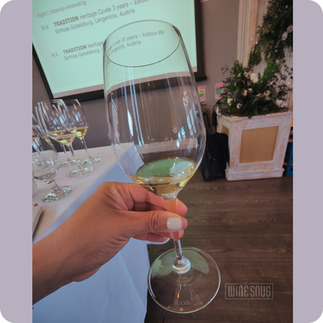














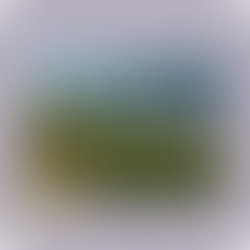




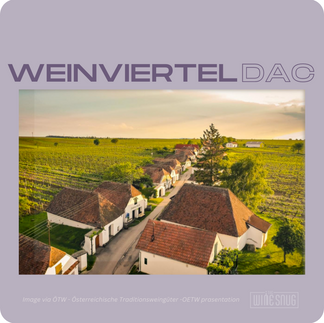
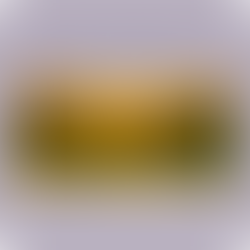



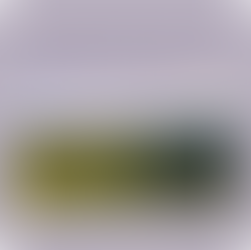

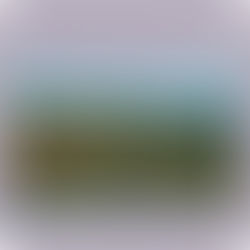






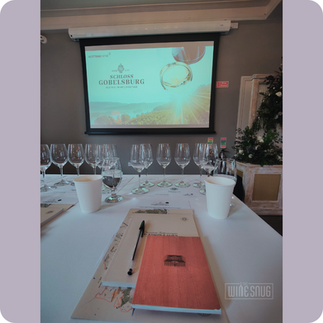





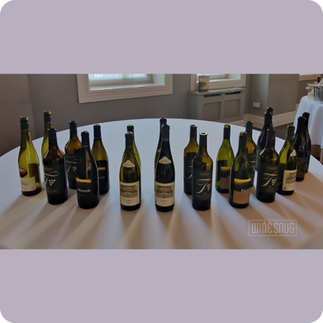





Comments